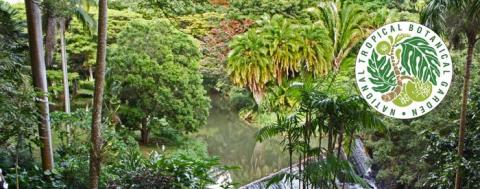
Hawaii is home to a rich variety of unique flora. The National Tropical Botanical Garden (NTBG), headquartered in Kalāheo, Hawaii, is focused on protecting and conserving native plants throughout the tropical regions of the Pacific. With roughly 2,000 acres of land, NTBG’s expansive gardens have become an example of natural biodiversity preservation. Many of these species are found exclusively in Hawaii — some, found in a singular valley.
The NTBG manages five preserves and five garden locations, four being in Hawaii and one in Florida. The staff at these gardens keep a catalog of about 112,000 plants, 16% of which are rare or endangered. By propagating them in a nursery and planting them once mature, NTBG’s staff have turned the gardens and preserves into safe havens for at-risk species.
In order to maintain this vast plant records database, they capture the location of each individual specimen. Once the rare seeds and plants are planted in the gardens, staff revisit them on a regular basis to monitor their health and growth. While planting, they also record each plant’s genetic history along with its location. In dense tropical areas with many plants of the same species, this is a huge advantage for future conservation efforts.
“When you have individuals from different populations growing, it will improve the genetic diversity for future generations,” NTBG Plant Records Manager Kevin Houck said. “And that really ties back into knowing where those plants live at the gardens.”
Identifying plant species from different populations can be difficult — but by recording the exact location the specimen was planted as a seedling, they can return to it with confidence that they are revisiting that specific plant, with that specific genetic background.

